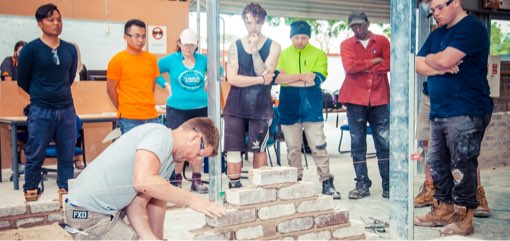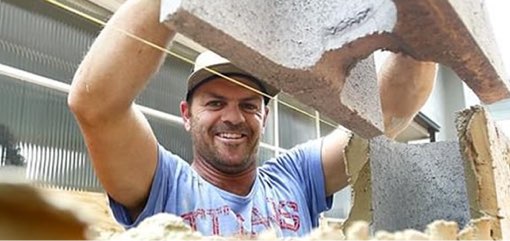Bricks and Bricklaying Basics Bricklayers lay bricks
A high degree of physical endurance and manual dexterity is required, in addition to having finished an apprenticeship and been given official certification. Because bricks may be used to build both floors and walls, skilled labourers like bricklayers are necessary for projects that include the use of bricks. When weather permits, these get-togethers happen in the open air.
You need to be able to read blueprints and schematics, take precise measures, mix the right mortar, and place bricks correctly to become a bricklayer. Bricks may also be cut and fitted using power equipment as an alternate option. Apprenticeship-trained bricklayers may operate alone or as part of large teams on challenging building projects.
A bricklayer's ability to lay brick for both walls and floors is essential
Successful performance in this profession requires a high degree of physical endurance due to the frequent need to lift heavy things. The task calls for a lot of stooping, lifting, and repositioning the body. Regular exercise may increase strength and stamina, both of which can help reduce the toll that stress and physical activity have on the body. If you have a physically demanding profession, you could discover that this reduces the discomfort you've been experiencing. The Bricklayer apprenticeship system is crucial in this region of the nation.
Masons create and repair buildings using brick, stone, and other masonry materials
Bricklayers often focus on residential buildings like houses and apartments, but they are also crucial to the building of public and commercial buildings like hospitals and schools, where they install elements like chimney stacks and tunnel linings. Bricklayers often find employment in the residential construction industry. The residential construction industry, which includes the building of houses and apartment buildings, is a common employer of bricklayers. Stone, concrete blocks, and precast panels are all available to them. Employment opportunities in masonry and block masonry may exist in the area.
In what ways are bricklayers expected to contribute to society?
Bricklayers are all experts in their trade because they have many common abilities. After reviewing the applications, we identified the most frequently-mentioned qualifications and work experience. We found that many applicants were eager to highlight their ability to multitask, their lack of fear of heights, and their keen colour vision. We thought this to be really intriguing. For that choosing the right Trade apprenticeships is essential here.
Step-by-Step Instructions on How to Enter the Bricklaying Profession
One of the first things you should consider if you want to be a bricklayer is how much schooling you'll need to get there. Our investigation revealed that 9.7 percent of the profession's bricklayers had bachelor's degrees or above from four-year colleges and universities. Compared to other fields, bricklaying has a very low number of master's degree holders (1.7%). A high school diploma is sufficient for entry-level work in the bricklaying industry. However, there are some bricklayers who have more education than that.
The bricks need to be laid immediately
Most people who want to start a career in bricklaying begin by serving as an apprentice. While certain businesses may have more stringent standards than others, most will still need proof of certification before letting you in the door. Consider working as a bricklayer or blocklayer there.
Conclusion
Bricklayers must be registered as building practitioners or at least be supervised by someone who is in a number of countries and regions. The Construction Induction Card is a mandatory piece of identification for anybody working in the construction sector.



Comments
Post a Comment